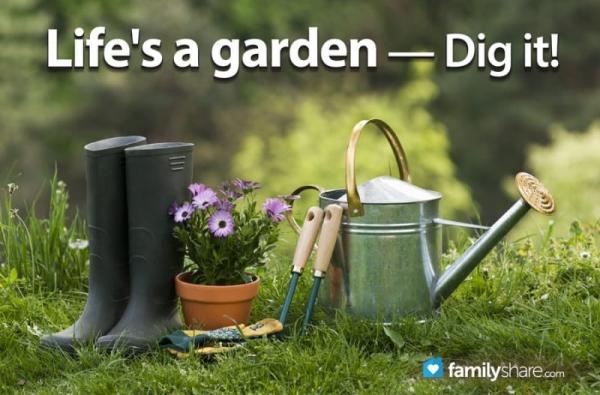
Thinking of taking up gardening? That's not a bad idea. The National Institute of Health actually recommends "30 to 45 minutes of gardening three to five times a week as part of a good strategy to combat obesity."� It will take a little planning and preparation, but the effort you put into creating and maintaining your own backyard garden will pay high dividends in the long run.
Starting out
First of all, you'll want to set aside a square of ground that you can dedicate solely to gardening. If you have existing grass or plants in the area, you'll want to pull them up so they won't steal water or nutrients from the plants you want to cultivate. Some people also choose to block off their garden plot with wood slats, bricks, or cinderblocks to make the divide between lawn and garden more distinct.
Preparing the soil
Not all soil was created equally. Some soil is rocky, some is sandy, and some will not yield good results from your garden no matter how much you water. First of all, you'll want to remove big rocks that might impede the growth of your plants. Turn over the soil with a spade or a rototiller, if you have access to one. Then go to your local gardening and farming store and talk to a clerk about what type of fertilizer would be best for the soil in your area. Some stores will even test your soil if you take them a sample of it.
Choosing your plants
This is the hardest part of the process - the decision of what you want to plant in your garden. There are tons of flowers, trees, shrubs, vegetables, and fruits to choose from. You'll want to consider your climate type and the amount of water your plants will have access to when choosing what kinds to plant. Some plants are hardier and can take a little neglect from a beginning gardener, so you might want to choose one of them for your first attempt at a garden. A few hardy varieties include marigolds, sunflowers, pansies, lettuce, tomatoes, and cucumbers.
Watering and upkeep
Newly planted seeds and seedlings need to be kept consistently moist until they're strong enough to draw sufficient moisture from the soil to prevent drying out during hot, sunny days. Water your plants daily either by hand or by setting up a drip watering system. Watering in the morning works best as there will be less evaporation. Unfortunately, it won't be just your plants you're watering, and soon you'll have a neat little garden of weeds as well. Pull weeds frequently in the first few weeks to be sure they don't overrun your little seedlings, stealing precious water and soil nutrients.
Once your plants are well-established, watered, and weeded, all you'll need is a little time before you get to enjoy the fruits of your labors. Don't be discouraged if all of your seeds don't yield the results you expected. Some seeds are just duds, while you might find others simply don't fare well in your climate. Over the years, you'll figure out what works and what doesn't. Meanwhile, your own health and wellness will begin to improve until eventually both you and your garden reach the peak of fitness.

